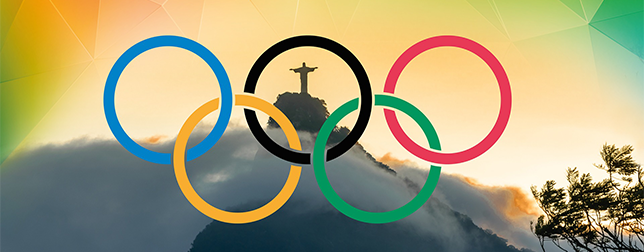It’s only 4 days left to head to Rio 2016! At WT| Wearable Technologies, we believe that the Rio Games will definitely be much more fascinating and unpredictable this year with the help of wearables. We figure out a few wearables which are already used by Olympians below.
Whoop announced since July 2016 that 20 Olympic athletes, including front-runners like swimmer Ryan Lochte, wrestler Adeline Gray and beach volleyball team Casey Patterson and Jake Gibb, are training with Whoop Strap 2.0 in preparation for Rio. Whoop is designed for continuous wear that provides athletes with data to reduce injuries and predict peak performance. It is lightweight, award winning wristband design that is worn day and night, measure key performance variables more than 100 times per second, 24 hours per day including strain, recovery and sleep.
The US Olympic athlete Greg Billington and Portuguese Olympic athlete Vanessa Fernades are taking advantage of Kinematix TUNE – an in-shoe monitoring to train for the Olympic game. TUNE allows athletes to control relevant parameters including speed, distance, altitude, time for both feet. TUNE provides athletes with valuable insights into running performance and technique. Based on the analysed data, TUNE offers a personalized program to intensify coaches ‘work.
Solos by Kopin – the smart eyewear for Olympic cyclists is expected to change the athletes’ performance. The Solos is ultra-lightweight, style and also comfortable. With a head-up display and audio integrated, cyclists are able to access real-time performance data from their smartphone or wearable sensors. Therefore, cyclists can reach to the peak of their potential throughout precision training with critical data.
Hexoskin smart shirt is another wearable to improve performance that is used by athletes joining in Olympic game 2016. The smart shirt works well with a phone or tablet via Bluetooth. After Hexoskin measures heart rate, breathing, pace and sleeping habits, it streamlines the data analytics for coaches. One plus for Hexoskin is that it is one of a few on the market that can measures electrical activity of the heart according to an electrocardiogram.
Let’s see how far the U.S women’s volleyball team can go at Rio Olympics with the help of VERT jump monitor training for the game. VERT is worn around players’ waists to calculate their jump heights and counts. It tracks how many time players jump with a certain position and advises them to change their practices as it can easily cause injury for ones who already suffered knee and back injuries. Thus, VERT’s Jump monitor is also used benefited as an injury-prevention tool.
The Canadian Olympic boxing Team revealed their secreting weapon to head to Rio Summer Game. It is Hykso – a cutting edge, punch tracking system. The Head coach of Canadian Olympic Boxing Team Daniel Trepanier used Hykso’s mobile app to show his fighters the output from their previous round of sparring. It allows the coach to recognize an undesired pattern. In addition, Trepanier also use Hykso’s mobile app to monitor the punches by his athletes in real-time. It is to make sure that athletes are maintaining the proper level of intensity during their sparring and training sessions.
Last but not least, there is a high-light product which is officially launched at Rio Olympics. It is not a product for training but equally important. It’s VISA payment ring which permit Olympians to pay with a wave of their hand. The ring is discreet, sleek, and water resistant in a quite simple look of black or white ceramic loop. There is a secure microchip interior with an embedded Antenna. No charging is needed. Besides, more than 20 sizes of the ring are offered to match almost all fingers.
Rio is an incredible opportunity to see how wearables rock the sport world. Wearables provide the ability to help athletes qualify their performance. If wearables help them understand how their bodies are performing, wearables will also influence their colour of medals.












